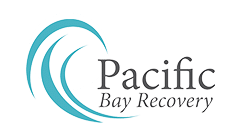If you have decided it’s time to tackle a substance abuse problem, you may be feeling somewhat overwhelmed with the treatment choices available. Selecting the best California substance abuse treatment facility for your specific treatment needs is a top priority. To learn all about addiction treatment programs, read on.
About Detox and Withdrawal
Before you begin the addiction treatment program you’ll need to complete the detox and withdrawal process. Detox involves ridding the body of the substance over a period of days or weeks while under medical oversight.
During detox, withdrawal symptoms surface within hours of the last dose or drink. Each substance has unique withdrawal symptoms. The detox team closely monitors the symptoms and provides medical interventions to reduce discomfort and cravings. Once the substance has cleared the system, the body slowly stabilizes. Now you are ready to enter treatment.
About Substance Abuse Treatment Programs
Treatment for substance use disorders is provided in two types of clinical settings, outpatient rehabs and inpatient (residential) rehabs. Here is a brief description of each:
- Residential treatment. Inpatient programs are the best option for moderate to severe substance use disorders and dual diagnosis. The individual will reside at the treatment facility for a specified duration, such as 30, 60, or 90 days. The inpatient residential programs are more intensive in scope and provide both structure and 24-hour support.
- Outpatient treatment. Outpatient programs come in three levels of intensity. These include basic outpatient treatment, intensive outpatient programs, and day programs. Outpatient treatment is appropriate for mild to moderate substance use disorders, and offers more flexibility than inpatient programs. Outpatient programs are often included in the overall treatment planning as a step down level of care after inpatient treatment.

Signs of Substance Use Disorder
When alcohol or drugs gain a foothold over your life, certain telltale symptoms start to emerge. While each specific substance will have its own symptom profile, here are some common signs of substance abuse:
- You lose interest in usual hobbies and pastimes.
- You begin to avoid social events and friends.
- You engage in doctor shopping to gain access to more pills.
- You lie to others about your substance use.
- You hide alcohol or drugs around the house.
- You engage in risky or impulsive behaviors.
- Your substance use leads to legal problems.
- You can’t limit or stop substance use, even when you want to.
- You obsess over having enough of the substance on hand.
- You begin to neglect obligations in favor of your substance abuse.
- You have increased cravings.
- You keep using the substance despite the mounting problems.
- You have chronic sleep problems.
- Your eating habits change.
- You neglect your appearance and personal hygiene.
- Your appearance changes due to the substance abuse.
- You start to have health problems caused by the drug or alcohol abuse.
- You experience withdrawal symptoms when substance wears off.
Dual Diagnosis Substance Abuse and Mental Health Treatment
The term dual diagnosis refers to patients who have a substance use disorder and a co-occurring mental health disorder. Dual diagnosis is extremely common among those who struggle with substance abuse.
Mental health disorders, like depression, bipolar disorder, and anxiety, often co-occur with alcohol or drug abuse. A tailored dual diagnosis recovery plan includes treatment for both disorders at the same time.
What to Look for in an Addiction Treatment Facility
To ensure that your treatment experience is as positive as it can be, it is essential to do some due diligence. At the very minimum, there are industry standards and important licensing requirements that regulate rehabs. Here are some of the features to seek out in a high quality treatment facility:
- Licensed and accredited. Check to see if the rehab is current on their state and local licenses. Ask if they hold CARF and/or Joint Commission accreditation.
- On-site detox. Seek a program that provides an on-site detox program, as this allows for a seamless transition to treatment.
- Expertise. Staff should include a team of licensed therapists, medical professionals, and addiction experts. A dual diagnosis treatment program should have a psychiatrist on staff.
- Evidence-based treatment. Ask if the treatment center prioritizes evidence-based psychotherapies. These are addiction treatment methods that have been studied and are shown to be effective for this purpose.
- Clean and well maintained. The residence should be organized, clean, and well managed. The rehab culture should be calm and respectful.
- Customized treatment plans. From the information gathered during the intake, the rehab should offer custom treatment plans and case management.
- Insurance. Most insurance plans provide some level of coverage for addiction and mental health treatment services. Ask the rehab to obtain the details of what your plan covers.
- Privacy. Ask the rehab about their privacy policies, and ask what protections are in place to secure personal data.
- Aftercare and alumni services. Inquire about their aftercare services, such as case management and alumni support.
What to Expect at a California Addiction Treatment Facility
When you enroll in a residential rehab you will benefit from an array of daily therapies and activities. These treatment elements are designed to assist you in meeting your recovery goals. They include:
- Psychotherapy. Talk therapy helps you examine any dysfunctional thought patterns that have fueled the substance abuse. There are several types of therapies used in addiction treatment, such as CBT, DBT, ACT, and MET.
- Group therapy: Small groups provide an outlet for peers in treatment to get to know and learn from each other.
- Education. Treatment programs provide classes that teach how addiction develops in the brain, which helps deter relapse. You will form a strategy for avoiding relapse, and also learn new coping skills to help manage triggers and cravings.
- Other activities. To enhance the effects of therapy, you’ll engage in EMDR, meditation, yoga, acupuncture, massage, and cupping therapy.
- Wellness. You will be guided on healthy dietary choices and encouraged to engage in regular daily exercise while in rehab.
Pacific Bay Recovery California Substance Abuse Treatment
Pacific Bay Recovery is a residential treatment program located at a private estate in San Diego, California. To obtain more details about the program, please reach out to our team today at


